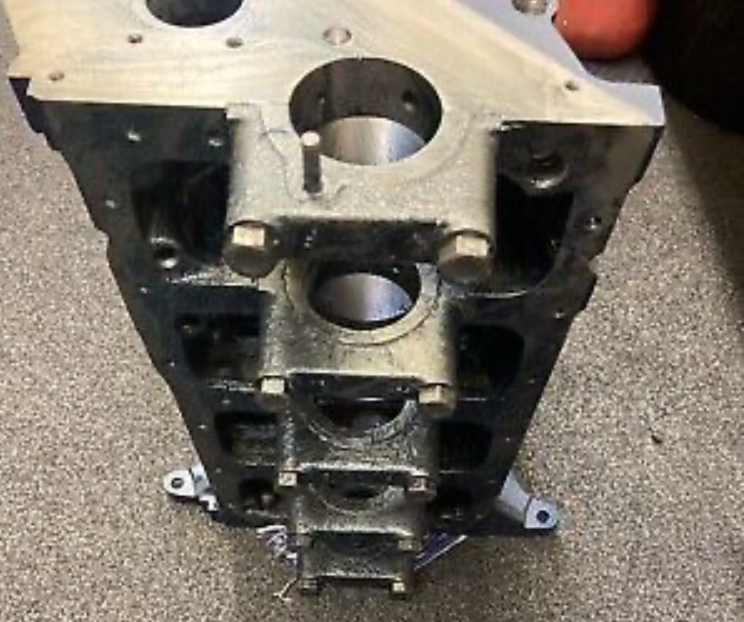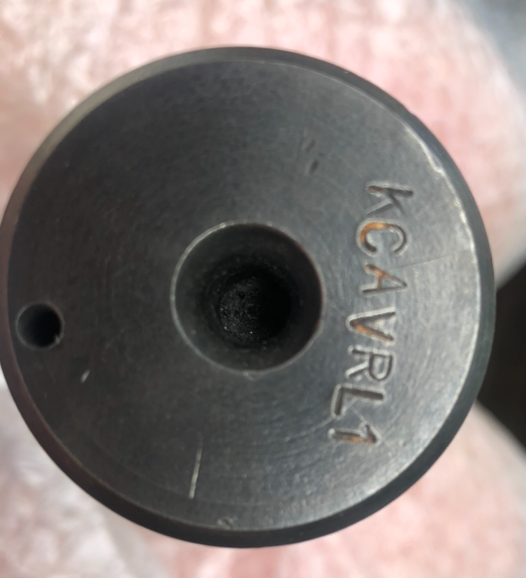You will be horrified at the condition of the parts i had to use to build this engine as all the parts are at least 50 years old which makes the project much more interesting as i am looking at metal fatque and rust, so a lot more work than building a engine using new parts.
but at the start of the project i knew it would be a challenge to get a engine with 50 year old parts to rev to 12,000rpm, and the reason it can achieve this air travels at 343 meters per second no matter how old the parts are, and is something nobody else would be prepared to build to rev to 12,000 rpm.
The remit from the Magazine Race Engine Technology said it had to be off the shelf parts in the 70s using a set of feeler gauges and a dial gauge, and that is what this article is about.
Exhaust valve size 35.91, exhaust port size 32.76, inlet valve size 37.84, inlet port size 34.53
All the machining was done by a Edinburgh company one of only two in Scotland.
They reground the crankshaft, bored the engine, cut the valve seats and vales, balanced everything, fitted crank, fitted pistons to check all were the same height in the bores, gapped the oversized rings to 14 though, and fitted the valves and new valve springs checking for coil bind.
See photos, Crank shaft out of balance by 15 grams, 1 piston seized as its been under bored, photo taken from under the valve seat number 1 inlet, he has fitted a oversized valve insert and didn't say he had done it, see photo looking from under the valve seat, all in all a total disaster, £1,750 I paid and he refuses to refund any money. Some of you will notice they even put the piston rings on out of order and upside down, its a horror story, and a bad advert for the industry
Scotland is a very small country with a population of 4.5 million which has increased by .5 million in the last 20 years
The engine has been rebored, valve insert fixed, rebalance everything, fit new pistons and rings, and fitting the conrods from my 1976 cost engine £400 standard rods lightened and duplex 1976 engine, modified the cylinder head gasket with a wider fire ring.
This work was done by Alvin Powell Motorsport Plymouth, its on his Dynamometer as it goes to 13,000RPM
Alvin has a very good reputation in the industry
The person who ported the inlet ports didnt align them with the manifold, the same mistake they made with number 1 inlet port by fitting a oversize valve insert
You will see i fitted an electric fuel pump which failed so reverted back to 50 year old manual fuel pump, i am also using points, to modify remove and straighten the spring, this will now work up to 12,000rpm
Standard rocker shafts have a springs to keep the rockers in place, but it takes 1.7 kilograms to move the rocker against the pressure of the spring thats a total of 10,200 kilograms per minute, so they have been replaced with spacers.
Conrods, the biggest problem,
there are 2 types available, 1300 and 1600 and the 1300 conrods are 100 grams lighter, but difficult to find, apart from the donor engine rods which were beyond salvage leaving me with heavy 1600 rods, until I had a phone call from the person that bought my 1987 engine which reved to 12,000rpm and were 1300 rods, this has been the best find and fits with my spec 1976 and 1987, they are still 50 years old and have possible cracks, but wont know until we run it.
The head is from a 70s circuit race car, it has a raised metal to protect the spark plug from heat. For me this is nearly the perfect combustion chamber for a flat topped piston
Above standard 1250cc pistons. This is one of the reasons this engine works using standard part, the pistons are from a short stroke 1250 engine and as the block is the same for a 1250 and 1300 the only differance is the stroke, so when you fit short stroke pistons with a long stroke crank the piston comes further up the cylinder and has to be machined to get the corect compression ratio and makes the piston lighter. The compression ratio of the engine is now 12:1.

car-calc.co.uk
Buy car-calc now
£25
Microsoft Excel required
to run
Head ports before enlargement from 70s size to new size, exhaust from 28mm to 33mm inlet from 31mm to 37mm.
I am happy about this enlarging the port size, as it worked in 1976 and 1987, the problem is every engine builder thinks yo have to enlarge ports to their maximum, this is not true as i am now losing air speed into the cylinder. They refused to run the engine with small ports, so i wasn't given a choice, i had to enlarge the ports, and it doesnt work because it creates low air speed bad fuel atomisation, the bhp starts dropping over 8,000 rpm. i have returned home and looking for a new head. i will upload photo of new finnished head.
This block is the secret to it being able to rev to 12,000RPM is its a very heavy well engineered block, heavier than most 2Ltr engines, there is no flexing or distortion in the crank running smooth all the way.
You will see the weight of the conrod and the piston are nearly equal weights, it's my theory that equal weights make for a more stable spinning mass
I had the maching company fit the pistons as the need to be topped to make them all the same height to balace the compression ratio, but these ones were all the same height so no machining needed
You will see i am using a Lucas 25 distributor with points, to get them to go to 12,000 RPM you straighten the spring so it can work at much higher revs
